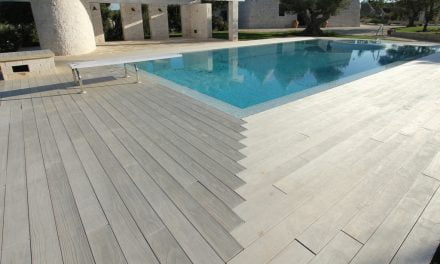They have filled the niche between affordability and sustainability and, in doing so, have become as fundamental to the timber flooring industry as their traditional timber counterparts.
However, just like solid timber and bamboo, floating floor products come with a range of equally enduring issues and complaints.
Fortunately, unlike natural timber, the manufactured and composite nature of many floating floor panels makes it easier to quantify and eliminate the cause of most concerns.
The Standards and Tolerances Guides for the manufacturing and installation of floating floors are a good place to start when aiming to solve these issues.
The functional capabilities of laminate floating floor products are determined by the manufacturer.
The products are also tested to determine their resistance to general wear and tear caused by common in-service factors including: abrasions, staining, cigarette burn, the effects of furniture legs, the effect of a castor chair and thickness swelling.
In addition to this testing, the products are also graded, based on their level of use. The relevant standard applied is EN 13329:2000 “Laminate floor coverings. Specifications, requirements and test methods”. The levels of use include “moderate”, “general” and “heavy” and differ between the categories of commercial and domestic use.
Floating floors in Australia
Australia’s foray into the manufacturing of floating floor products could be compared to “hobby farming” in the context of the rest of the world.
For this reason, the most useful documents have been developed and produced by European manufacturers, who led floating floor innovation. These standards were developed by CEN, the European Committee for Standardisation, alongside their American counterparts,
the North American Laminate Flooring Association.
The overall functionality of a floating floor product depends on the individual tolerances of each component, meaning the overall floor is only as strong as the sum of its individual parts. Because of this dynamic, we look to the tolerance guides, which detail the individual board limits, and can be applied when investigating the possible cause of flooring issues.
Assessing tolerance
Tolerance can be broken broadly into two categories: manufacturing tolerances and in-use tolerances (or the level of general wear and tear that can be sustained by the product).
Manufacturing tests consider the following attributes: thickness; length; width; dimensions of the squared elements; squareness of the element and the straightness of the surface layer; flatness; openings and height difference between elements; dimensional variation after changes in relative humidity; light fastness; resistance to indentation; and surface soundness.
Manufacturing tolerances are designed to ensure that products entering the marketplace are consistent in quality and are fit for the intended purpose.
When it comes to in-use tolerances, the European producers of the Laminate Floorings Code of Practice outline the following key aspects of flooring:
- 7.1.1 Uneven joints: Irregularities and tolerances between individual planks may become apparent along the sides and ends over time. Maximum height differences of 0.01 mm are tolerable, whereby individual incidents of up to 0.15 mm are acceptable.
- 7.1.2 Convex/concave warping: The maximum acceptable tolerance for convex and concave warping, measured across the full width of the installation plank, is 0.25 mm.
- 7.1.3 Openings: Openings within the floor surface with a maximum width of 0.20 mm are acceptable.
The Australian version of the code goes one step further, taking into account different board thickness and widths by using a percentage range to measure its allowable tolerances, as follows:
- General acceptable tolerances – Convex/concave warping: This refers to the instance when using a straight edge across the width of a laminate panel, a deviation in “˜planeness’ exist between the middle and the edges of a panel. The maximum, acceptable tolerance for deviation from the plane, measured across the full width of installed plank, is 0.125 per cent of the board width.
- Openings/gaps: Openings or gaps within the laminate floor immediately after installation, with a maximum of 0.1 per cent of the board width, are acceptable – provided that the joints are clicked or glued together and/or colour filled using an appropriate putty material.
- Bamboo products have similar tolerances to that of laminate flooring, because reputable manufacturers consider the industry standards of other types of flooring products during production.
For example, the Geometry Standard of a Bamboo Floor document outlines the following acceptable dimensions:
- Board length: 0-0.5 per cent depending on the length of the board.
- Board width: 0-0.3 per cent depending on the width of the board.
- Board thickness: 0.2. per cent.
Post-installation problems
Post-installation flooring problems often fit into one of two categories. The first is visual issues – those that are visible and should have been noted prior to or at the time of installation.
The second category is latent issues, which are problems that can potentially occur after the flooring has been installed.
One of the most common latent issues is caused by a significant change in humidity levels or excessive moisture on the flooring.
This is often caused by the floor owner not implementing correct cleaning and long-term maintenance practices. Wet towels always being left on the floor are a great example of this!
A change in the dimensions of the floor boards can be due to seasonal humidity. Improper maintenance can also be a factor, as can excessive mistreatment of the floor boards.
It’s important to remember that each board requires inspection before and during installation. Problems can arise or become apparent during this crucial time, and a failure to inspect the boards early can make it difficult to fit to adjoining boards later in the installation, resulting in more problems.
Improper installation techniques are a common issue. When boards with locking system profiles are knocked together horizontally or flat, the locking system becomes compromised, rendering one side of the joint proud.
In such instances, the manufacturers of locking system joint profiles provide product specific instructions regarding angle and alignment for joining adjacent boards.
We hope that in the future, those of you having issues with floating floor installations will be able to access and use the tolerance guides to solve some of these problems.


 Ray and Sharon Brice specialise in mediation training and project management. They have four decades of experience in the flooring industry.
Ray and Sharon Brice specialise in mediation training and project management. They have four decades of experience in the flooring industry. 







